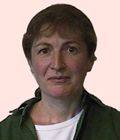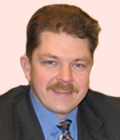NMCA experience regarding coordination between data producers: examples of technical solutions for data interoperability
Friday, 29 May 2015, 0900 – 1030 hrs
WORKSHOP DESCRIPTION
Ones of the key questions when implementing INSPIRE are “What to do if there are several data producers for the same INSPIRE theme? Should each of them make its data compliant to INSPIRE or should there be coordination between data providers? In case of coordination, how might/should this coordination be organized? “ The proposed workshop aims to provide some examples of good practice, based on several events organized by the INSPIRE KEN (Knowledge Exchange Network) of EuroGeographics and on the work done in the ELF (European Location Framework) project; these good practices come from the experience of NMCAs and therefore focus mainly on themes of annexes I and II.
The aim of the workshop is knowledge exchange:
- Providing knowledge by presenting some good examples
- Increasing every one knowledge from discussion with the audience that will be invited to provide its own examples (or issues).
TARGET AUDIENCE
Data producers
- NMCAs
- others (mainly those involved in same themes as NMCAs such as Addresses, Administrative units, Geographical Names, Hydrography, Transport Network, Cadastral Parcels, Land cover /Land Use, Orthoimage, Elevation, Buildings, Utilities and Governmental Services, …)
European Commission representatives
Data users
Any interested person.
DETAILED WORKSHOP AGENDA
- Introduction and context: Christina Wasström
The introduction will explain the workshop context (based on previous INSPIRE KEN activities and on ELF), it will remind the legal context (from INSPIRE Directive articles) and present the 3 main coordination models: collective, basic and node.
10 minutes - State-of-play regarding the themes NMCAs are involved in : Saulius Urbanas
A short summary about who are the main data producers for themes AD, AU, CP, HY, GN, TN,EL, OI, BU, LC/LU, BU and US.
10 minutes - Examples of good practice : Dominique Laurent
- Offer single point of access
In case of scattered data, offering single access point may be good solution; this will be illustrated by some examples, such as the Urbanism Geoportal (France), the Klic-on-line application (Netherlands) or the ELF Cascaded services. - Make reference data set
In case of several data sets on same theme, best option may be to design a reference data set, either by assembling or by integrating the existing data sets. Some technical solutions will be provided as examples (using national standard, combining geometry and semantics…). The best organizational model for theme Transport Network will be discussed. - Improve data consistency
Data consistency, across borders, themes or levels of detail, has been identified as an interoperability component in the Generic Conceptual Model. INSPIRE pushes data providers to improve consistency between data from several data producers. This will be illustrated by several national or European initiatives, such as the project of intermodal nodes in Sweden or the ELF activities regarding international boundaries and edge-matching.
- Offer single point of access

French Mapping Agency (IGN)
France

EuroGeographics
Lithuania

Lantmateriet
Sweden